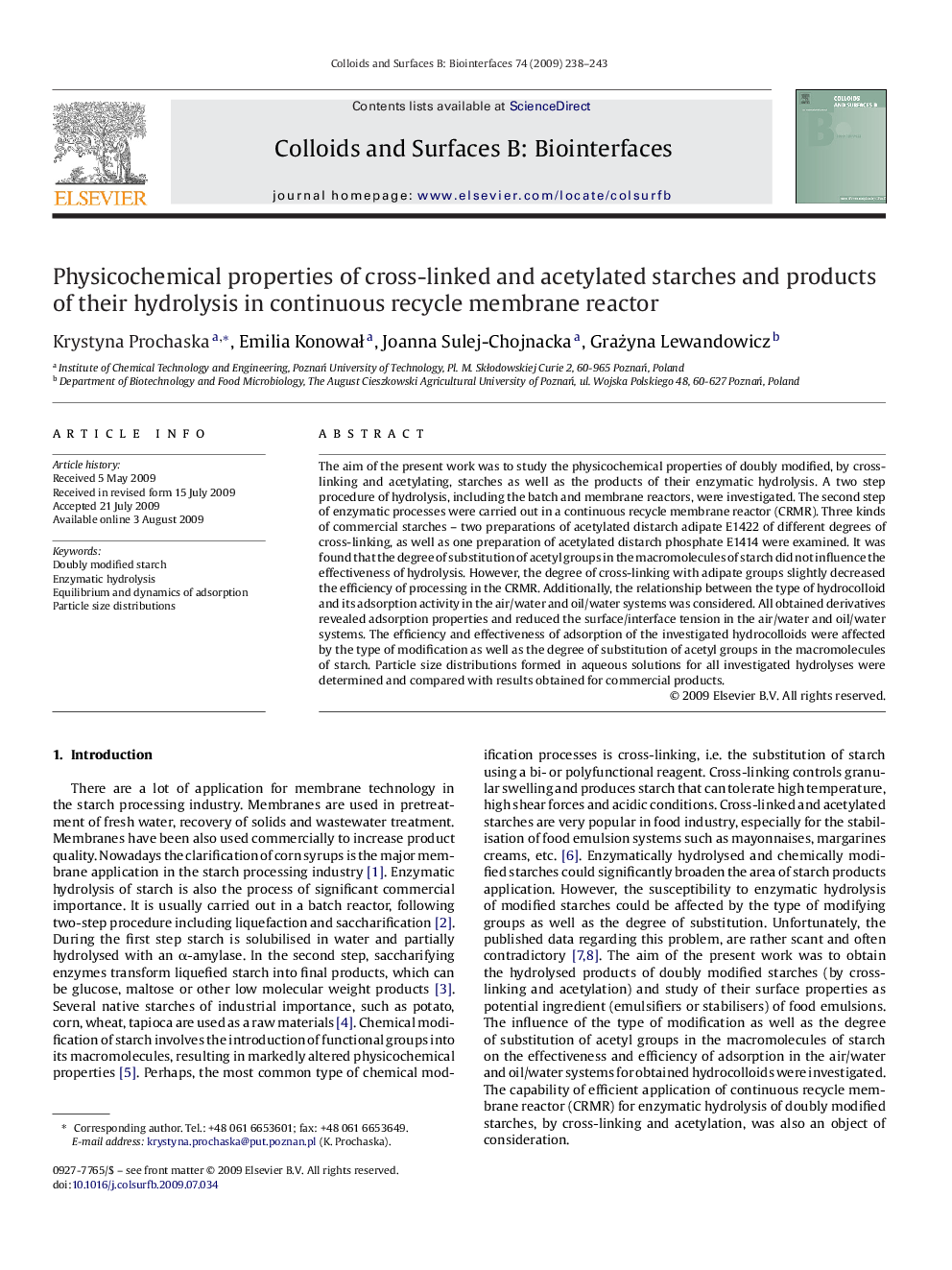| Article ID | Journal | Published Year | Pages | File Type |
|---|---|---|---|---|
| 601831 | Colloids and Surfaces B: Biointerfaces | 2009 | 6 Pages |
The aim of the present work was to study the physicochemical properties of doubly modified, by cross-linking and acetylating, starches as well as the products of their enzymatic hydrolysis. A two step procedure of hydrolysis, including the batch and membrane reactors, were investigated. The second step of enzymatic processes were carried out in a continuous recycle membrane reactor (CRMR). Three kinds of commercial starches – two preparations of acetylated distarch adipate E1422 of different degrees of cross-linking, as well as one preparation of acetylated distarch phosphate E1414 were examined. It was found that the degree of substitution of acetyl groups in the macromolecules of starch did not influence the effectiveness of hydrolysis. However, the degree of cross-linking with adipate groups slightly decreased the efficiency of processing in the CRMR. Additionally, the relationship between the type of hydrocolloid and its adsorption activity in the air/water and oil/water systems was considered. All obtained derivatives revealed adsorption properties and reduced the surface/interface tension in the air/water and oil/water systems. The efficiency and effectiveness of adsorption of the investigated hydrocolloids were affected by the type of modification as well as the degree of substitution of acetyl groups in the macromolecules of starch. Particle size distributions formed in aqueous solutions for all investigated hydrolyses were determined and compared with results obtained for commercial products.
